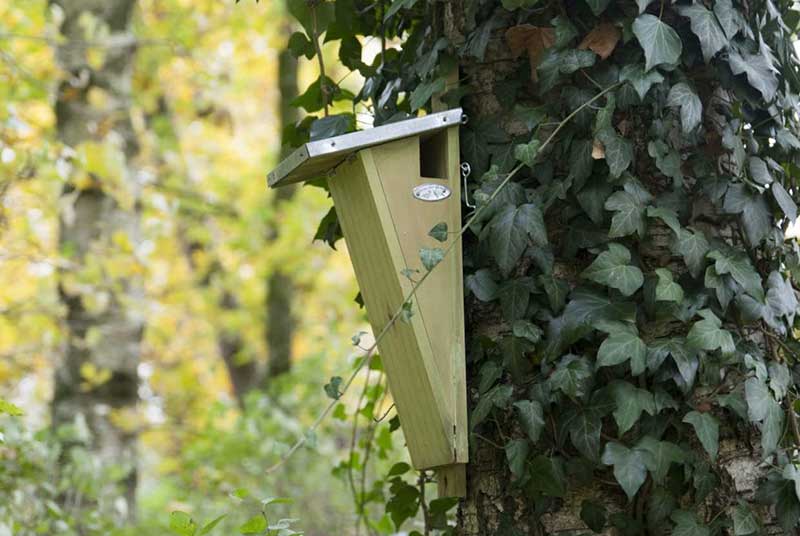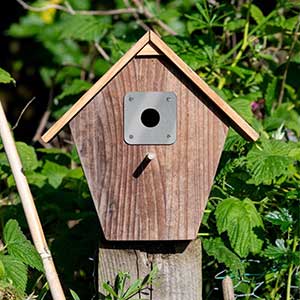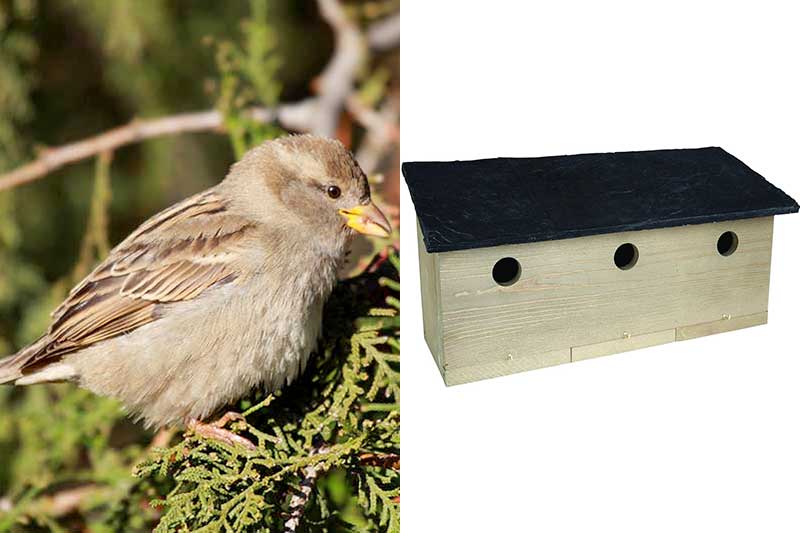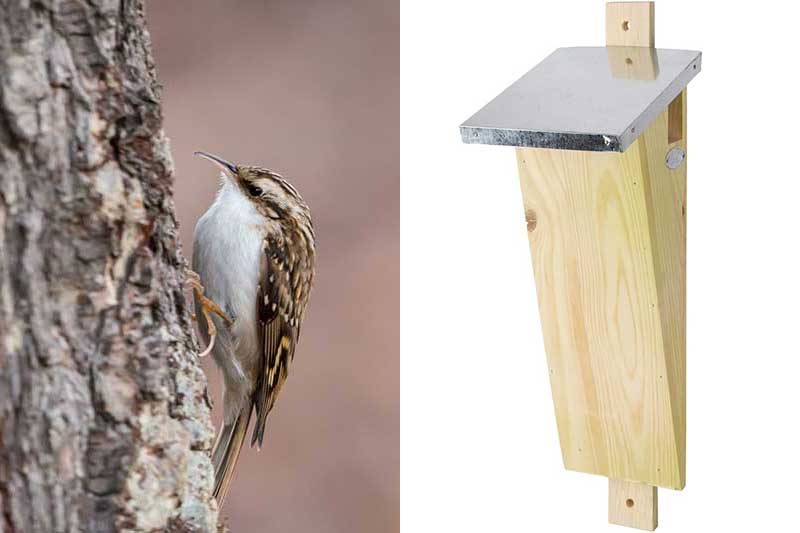Main Menu

House martins typically build their mud nests under the eaves of buildings, often forming colonies of around five nests. However, modern changes in house construction and roof design have led to a significant decline in suitable nesting sites.
The house martin nest cup is made from exterior-grade plywood and WoodStone, a durable blend of FSC-certified wood fibres and concrete. This combination makes the nest lightweight, easy to install, and highly durable, providing a long-lasting alternative to natural nesting sites.
Swifts are one of the UK’s most iconic summer visitors, undertaking an incredible journey from Central Africa each year to breed. Traditionally, they nest in the eaves and gables of large buildings, but modern construction has made these spaces increasingly inaccessible.
The swift nest provides a secure and practical solution. It has a hanging plate that is first fixed to the wall, allowing the nest box to be safely mounted as close to the eaves as possible, replicating the birds’ natural nesting sites. This design ensures the box is both stable and secure for the swifts while also keeping it safe for people passing below.
Swallows migrate south every autumn, following the warm weather to the southern tip of Africa, where they spend the winter. Each spring, they make the long journey back, usually arriving in the UK by April. They prefer to build their nests in barns, garages, stables, and outbuildings, where they can find shelter and easy access to food.
You can support these summer visitors by installing ready-made, grey unglazed ceramic nest bowls mounted on FSC-certified timber boards. Providing these nesting sites near their hunting grounds helps maximise their breeding success and offers a safe place for them to raise their young.
Robins prefer open-fronted nest boxes rather than traditional bird boxes with entrance holes, unlike many other garden birds. This robust nest box features thick walls for improved insulation and durability, while the overhanging roof offers protection from the elements. Drainage holes at the base help prevent water from accumulating inside, keeping the nesting site dry and safe.
Built for outdoor use, this nest box is crafted from FSC-certified timber and treated with an environmentally friendly, non-toxic preservative for extra weather resistance. It also includes a concealed mounting hole on the back, allowing for easy and secure attachment to walls, trees, or fences.
British gardens now host more breeding pairs of blackbirds than woodlands, and, like robins, they prefer open-fronted nest boxes. This wooden nest box features a deep chamber, offering ample space for their grass- and mud-lined nests while ensuring the brooding female has a clear view, an important factor for their nesting success.
For added protection against the elements, the box is topped with a metal-skinned roof. A hanging loop at the back allows for easy installation – simply place it over a screw or nail.


House sparrows are sociable birds that thrive in a variety of UK habitats, from towns and cities to farmland and countryside. However, significant population declines in both urban and rural areas have raised concerns for the species.
Since house sparrows nest in colonies, this terraced nest box is designed with three separate nesting compartments, making it especially appealing to them. Handcrafted from FSC-certified timber, each compartment features a removable floor for easy cleaning. Additionally, a protective nest box plate surrounds each entrance hole, helping to safeguard the birds from predators.

